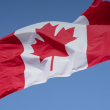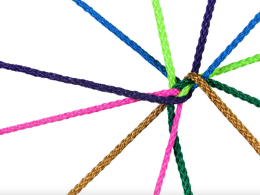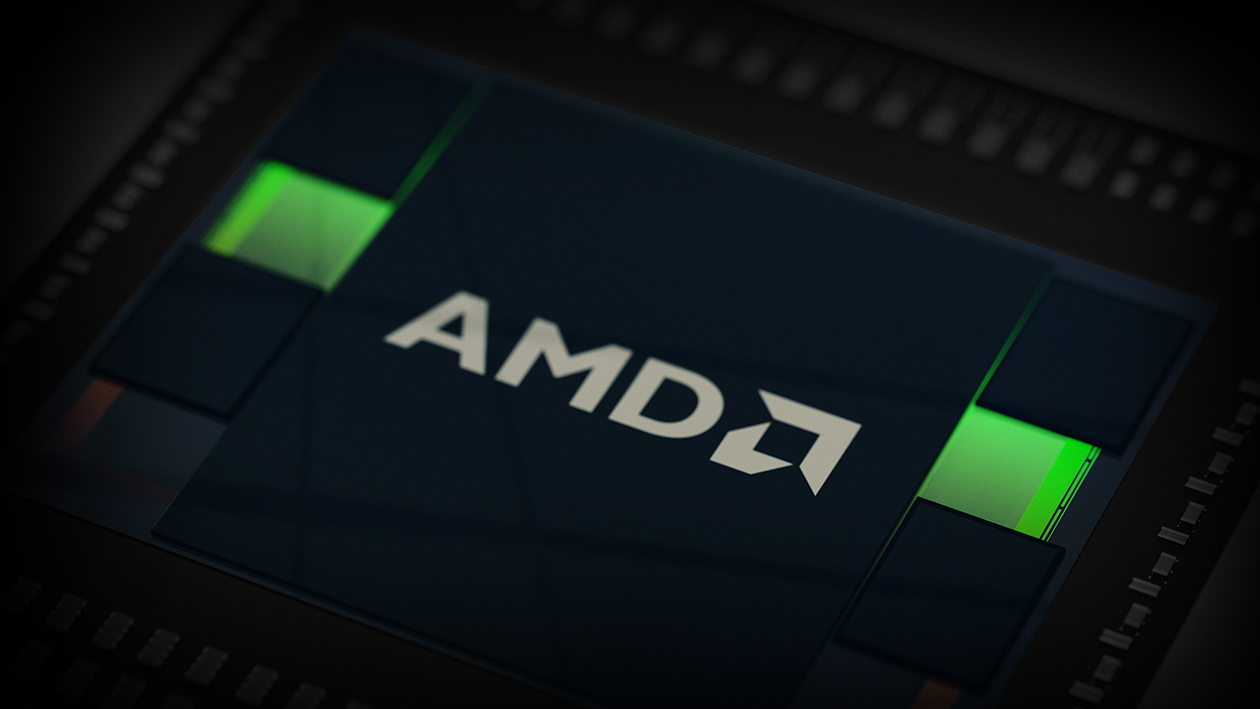by Randy Frederick, Charles Schwab and Company
Key Points
- Bearish spreads allow you to take a directional position (downward) on an underlying security while potentially reducing risk.
- The initial cost or maximum potential loss of a bearish spread can be less than that of a long put or an uncovered (naked) call option position.
- We'll help you determine what relative strike prices to use based on your level of bearishness.
As a trader, you know that markets don't always go up. So it's helpful to have tools at your disposal to address both up and down markets. Previously, we discussed how to find good candidates for bullish spreads. Now, I'd like to focus on potential ways to generate a profit in down markets with bearish spreads.
Why use a bearish spread?
Spreads allow you to swap a small amount of profit potential for the opportunity to significantly reduce risk. They involve the simultaneous purchase and sale of two or more options contracts of the same type (call or put) on the same underlying security. With vertical bearish spreads, the expiration month is the same, but the strike price of the long option will be higher than the strike price of the short option.
If you need a refresher on how spreads work and how to calculate strategy gains, losses and breakevens, I'd suggest reading more about debit spreads and credit spreads.
The two most basic types of bearish spreads are:
- Debit put spreads: Involve the purchase of a put option on a particular underlying security, while simultaneously selling a put option on the same underlying security with the same expiration month but with a lower strike price.
- Credit call spreads: Involve the purchase of a call option on a particular underlying security, while simultaneously selling a call option on the same underlying security with the same expiration month but with a lower strike price.
Both types of spreads are typically used when you are bearish, but they differ somewhat by when and how you can make a profit or sustain a loss. Let's find out how.
How bearish are you?
The table below illustrates how to properly structure a bearish spread to match your level of bearishness. The strike prices you use will affect the magnitude of the underlying move needed to reach profitability, as well as whether or not the spread can be profitable if the underlying security remains unchanged.
For example, if you're extremely bearish, you may want to consider an out-of-the-money (OOTM) debit put spread or an in-the-money (ITM) credit call spread. Keep in mind, both will generally require a bearish move of extreme magnitude in the underlying stock in order to reach profitability. In contrast, if you are neutral to only slightly bearish, you may want to consider an in-the-money debit put spread or an out-of-the-money credit call spread, both of which can sometimes be profitable with little or even no movement in the underlying stock.
As with most options strategies, the greater the underlying move needed, the higher the profit potential—but also the less likely it is that a profit will be made. Similarly, if you structure your spread so that profitability is possible with no movement in the underlying stock, any profit will likely be relatively small.
Our goal is to identify possible bear spread candidates, so let's review some sample charts using technical analysis to determine where bear spreads might be appropriate. Note that the examples do not include commission charges, which may be significant and will impact the profit or loss.
In the first chart below, you have identified XYZ stock, which appears to be hitting some upside resistance. As a result, you may be expecting a possible slight downward move.

Source: StreetSmart Edge®.
Slightly bearish?
If you're only slightly bearish, you may want to consider the following in-the-money debit put spread. As with all spreads, you can calculate the maximum gain, maximum loss and breakeven before you actually enter the trade. The maximum loss on a debit spread will always be the amount of the initial debit.
In-the-money debit put spread example (current price of XYZ = $25.57):
- Buy 10 XYZ Nov 28.00 puts @ $3.15
- Sell 10 XYZ Nov 26 puts @ $1.81
- Debit = $1.34
- Breakeven = $26.66 (Nov 28.00 strike price – debit) ($28.00 – $1.34)
- Maximum gain = $0.66 (net of strikes – debit) ($2.00 – $1.34)
- Maximum loss = $1.34 (net debit paid)
Total cost of this trade = $1,340 ([debit] x [number of spreads] x [options contract multiplier]), or ($1.34 x 10 x 100)
This hypothetical example would be considered in the money (ITM), because the long option is ITM and the short option is slightly ITM. By calculating the breakeven before you enter the trade, you can see that with a breakeven price of $26.66, XYZ can actually move against you by as much as $1.08 by expiration and still be profitable.
At expiration, the maximum profit of $660 will be reached if XYZ is below $26 (the lower strike price) because both options will be exercised and the net between the two is $2,000. Subtract from $2,000 the initial cost of $1,340 to arrive at the net profit. At expiration, losses will be incurred if XYZ closes above $26.66, with the maximum loss of $1,340 occurring at any price above $28.00 (where both options expire worthless). If that occurred, you'd lose your entire initial investment.
Moderate to extremely bearish?
If you are moderate to very bearish, you may want to consider the following at-the-money (ATM) credit call spread. Here, you would receive a credit at the time the spread is established, but you can still calculate the maximum gain, maximum loss, and breakeven before the trade is entered. The maximum gain on a credit spread will always be the amount of the initial credit.
At-the-money credit call spread example:
- Buy 10 XYZ Jun 26 calls @ $1.36
- Sell 10 XYZ Jun 23.00 calls @ $3.15
- Credit = $1.79
- Breakeven = $24.79 (Jun 23.00 strike price + credit) ($23.00 + $1.79)
- Maximum gain = $1.79 (credit received)
- Maximum loss = $1.21 (net of strikes – credit) ($3.00 – $1.79)
Total margin requirements of this trade = $1210 ([net of strikes – credit] x [number of spreads] x [options contract multiplier]), or ([$26.00 – $23.00 – $1.79] x 10 x 100)
This hypothetical example would be considered at the money (ATM), because the short option is ITM and the long option is slightly out of the money (OOTM). By calculating the breakeven before you enter the trade, you can see that with a breakeven price of $24.79, XYZ needs to decrease in price by more than $0.78 by expiration to be profitable. At expiration, the maximum profit of $1,790 will be reached if XYZ is below $23.00 (the lower strike price), because both options will expire worthless and the entire initial credit will be retained.
At expiration, losses will be incurred if XYZ closes above $24.79, with the maximum loss of $1210 occurring at any price above $26 (where both options are exercised). If that occurred, you'd lose more than your initial credit. To calculate the maximum loss, subtract the initial credit of $1,790 from the net loss between the two strike prices of $3,000 to arrive at $1210.
Let's take a look at a second chart using technical analysis to help illustrate where bear spreads might also be appropriate. In the chart below, you've identified XYZ stock, which appears to have just fallen through a downside support line. As a result, you're expecting a continued downward move and you're still only slightly bearish.

Source: StreetSmart Edge®.
Slightly bearish?
If you are only slightly bearish, you may want to consider the following debit put spread.
In-the-money debit put spread example (current price of XYZ = $14.05):
- Buy 10 XYZ Nov 17.50 puts @ $3.50
- Sell 10 XYZ Nov 15 puts @ $1.30
- Debit = $2.20
- Breakeven = $15.30 (Nov 17.50 strike price – debit) ($17.50 – $2.20)
- Maximum gain = $0.30 (net of strikes – debit) ($2.50 – $2.20)
- Maximum loss = $2.20 (net debit paid)
Total cost of this trade = $2,200 ([debit] x [number of spreads] x [options contract multiplier]) or ($2.20 x 10 x 100)
This hypothetical example would be considered in the money (ITM), because both the long option and the short option are ITM. By calculating the breakeven before you enter the trade, you can see that with a breakeven price of $15.30, XYZ can actually rise in price by up to $1.24 by expiration and still be profitable.
At expiration, the maximum profit of $300 will be reached if XYZ is below $15 (the lower strike price), because both options will be exercised and the net between the two is $2,500. Subtract from $2,500 the initial cost of $2,200 to arrive at the net profit. At expiration, losses will be incurred if XYZ closes above $15.30, with the maximum loss of $2,200 occurring at any price above $17.50 (where both options expire worthless). If that occurred, you'd lose your entire initial investment.
Moderately bearish?
If you are moderately bearish, you may want to consider the following credit call spread.
At-the-money credit call spread example:
- Buy 10 XYZ Jun 15.00 calls @ $0.50
- Sell 10 XYZ Jun 12.50 calls @ $2.20
- Credit = $1.70
- Breakeven = $14.20 (Jun 12.50 strike price + credit) ($12.50 + $1.70)
- Maximum gain = $1.70 (credit received)
- Maximum loss = $0.80 (net of strikes – credit) ($2.50 – $1.70)
Total margin requirements of this trade = $800 ([net of strikes – credit] x [number of spreads] x [options contract multiplier]), or ([$15.00 – $12.50 - $1.70] x 10 x 100)
This hypothetical example would be considered at-the-money (ATM), because the long option is OOTM and the short option is ITM. By calculating the breakeven before you enter the trade, you can see that with a breakeven price of $14.20, any downward movement in XYZ by expiration will be profitable. In fact, XYZ could even move up by $0.15 before losses would be incurred.
At expiration, the maximum profit of $1,700 will be reached if XYZ is below $12.50 (the lower strike price), because both options will expire worthless and the entire initial credit will be retained. At expiration, losses will be incurred if XYZ closes above $14.20, with the maximum loss of $800 occurring at any price above $15.00 (where both options are exercised). If that occurred, you'd lose more than your initial credit. To calculate the maximum loss, subtract the initial credit of $1,700 from the net loss between the two strike prices of $2,500 to arrive at -$800.
Spreads can reduce risk
Hopefully, these examples have shown how you can structure both credit and debit spreads to potentially take advantage of charts showing varying signs of bearishness. In many cases, spreads can be a preferable alternative to a straight long put position or an uncovered short call position because while all of these strategies offer the ability to take a bearish directional position, the initial cost or maximum potential loss is reduced with spreads.
Copyright © Charles Schwab and Company















